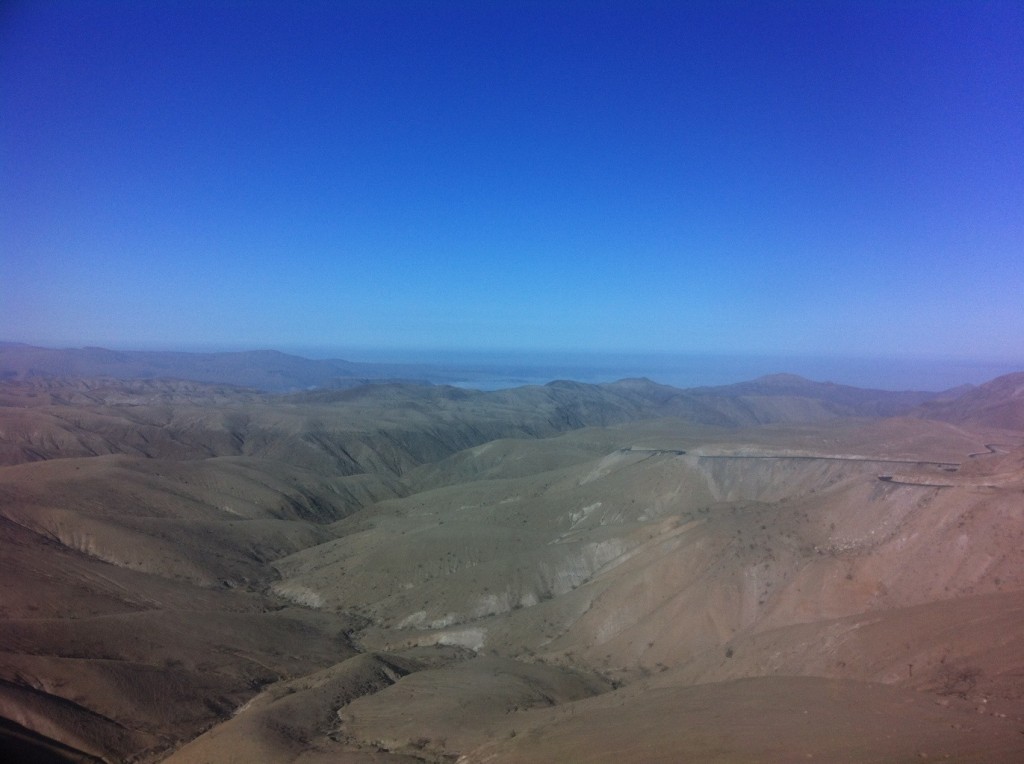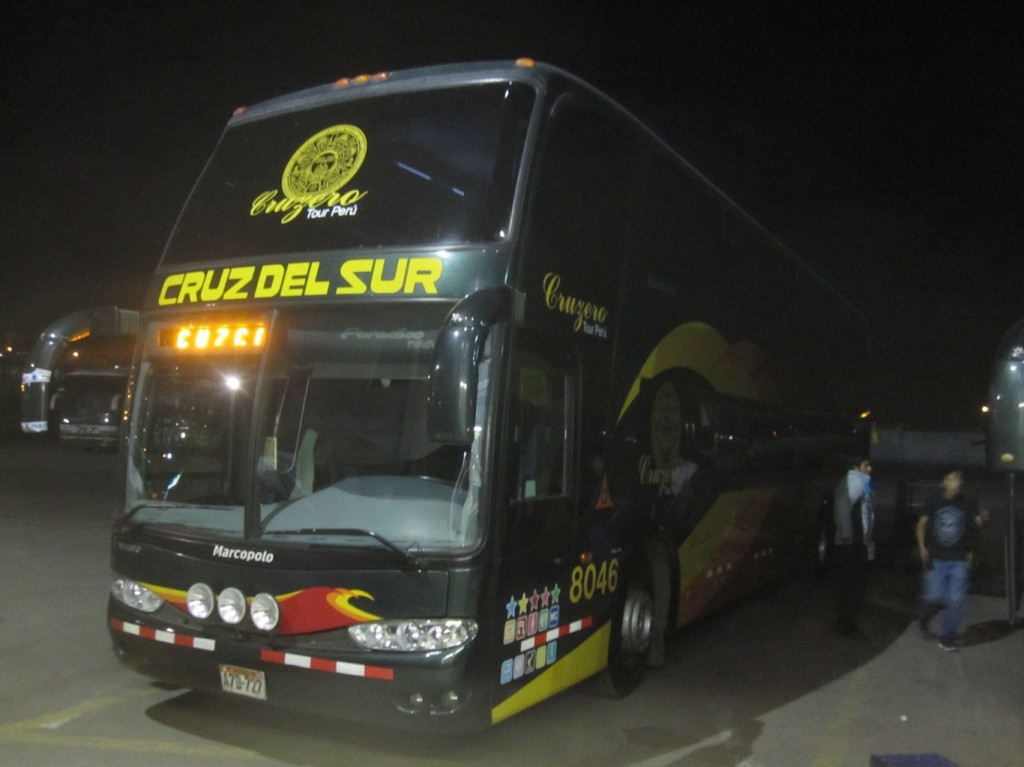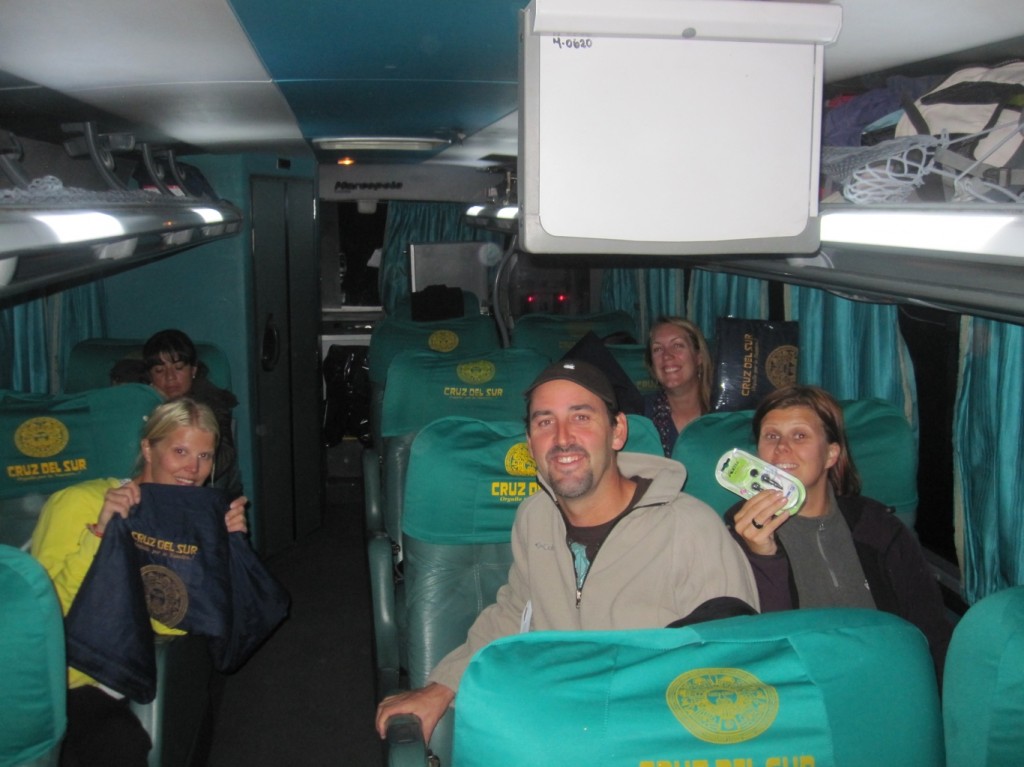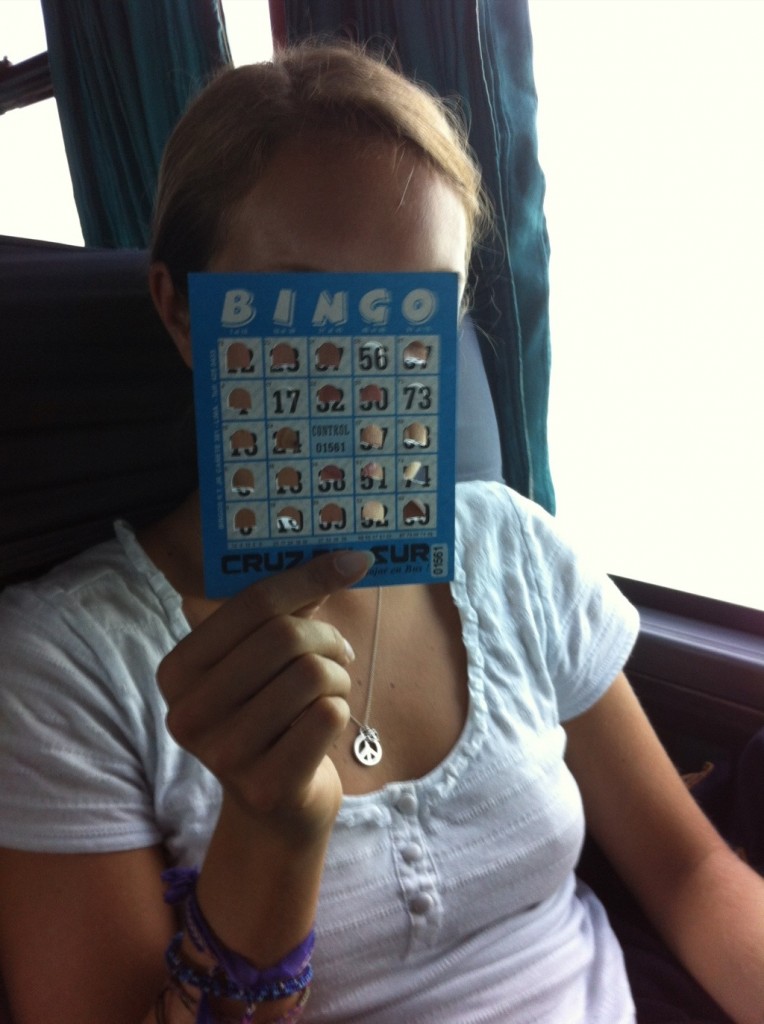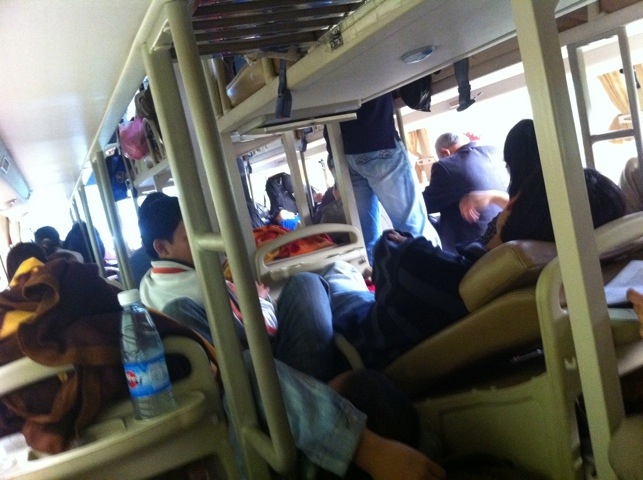
View from my seat on the bus
I’m writing from an epic bus journey, 24 hours from Hanoi, Vietnam to Vientiane, Laos. Laura and I have just had a tasty picnic lunch of baguettes filled with ham and actual cheese with flavour. My taste buds are still tingling from the sensation! Accompanied by stunning mountain panoramas and the great music of Electrelane, it’s gone a long way to break up the monotony of a long road trip.
The bus we’re on is a modern sleeper, with three lines of bunk beds running down its length, some flat screen TVs playing Vietnamese dubbed Kung Fu movies, and a lot of sweaty passengers in the near-flat seats, and also on the isles between them. We’ve seen this trip dubbed ‘The bus journey from hell’ online, but in reality it’s been pretty good, after a slightly shaky start.
Our last day in Hanoi started with a quick visit to Ho Chi Minh’s Mausoleum and House. It’s a bit of a logistical struggle, and we’d failed to make it into the complex before going to Sa Pa. The complex is closed Mondays and Fridays, and of course on weekends. It’s also closed after 11am daily. And for all of September, October and November, when his body is sent for it’s annual re-embalming. It still being November, we were expecting to only see the house (which is apparently open afternoons, although how you actually get in since the complex is locked is another matter), but unexpectedly found ourselves in a line leading to the Mausoleum. I don’t think either of us had quite expected to round a corner, be shushed to silence by a guard, and find his body on display in the spotlights. This is probably the right time to say that as much as it was a surprise to us, it would also have come as a surprise to him, given his final wish was to be cremated, something not honoured by his successors. We also went round his ‘Stilt House’, a very modest two room dwelling where he was said to have lived, exemplifying himself as a man of the people with modest ways. This perspective does somewhat overlook a few facts though – for this place is still within the lavish grounds of the presidential palace, and Uncle Ho (as he’s endearingly known) also had another more conventially-sized house within the grounds – complete with a collection of cars. Strangely although on the tour, this isn’t the one featured on all the photos of his life though…
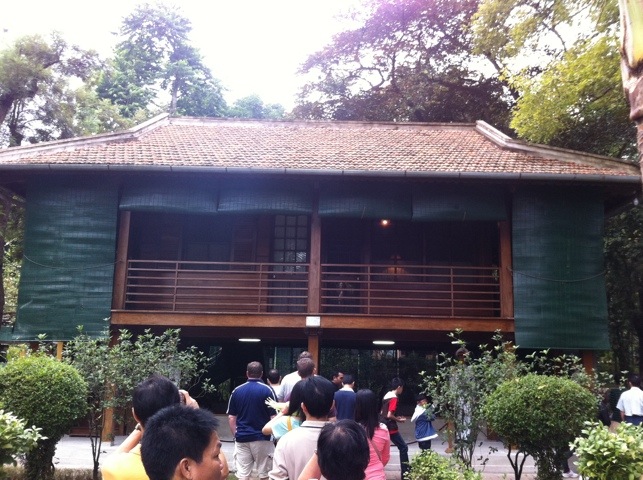
Ho Chi Minh's Stilt House
We were picked up from our hotel by a minibus to take us and apparently 25 other tourists to the bus depot. Considering the minibus could seat 19, and we all had luggage a plenty, it was a bit of a squeeze! The obvious jokes about us being on the minibus all the way to Laos weren’t that appreciated by those standing in the isle, and we were pleased when rolled up at the city bus depot. Although not quite so manic on this sleeper bus, it’s still a squash for taller folks, with some bunks apparently built for dwarfs incongruously the place they were forced to sit by the driver’s shouting assistant. There’s a guy off to our right whose seat is so small that with his legs straightened out he was nearly sitting on the head rest! Fortunately our bunks are fine, even if the aforementioned shouting assistant has gone to sleep on the bit of corridor between us and occasionally elbows us as he stretches in his sleep.
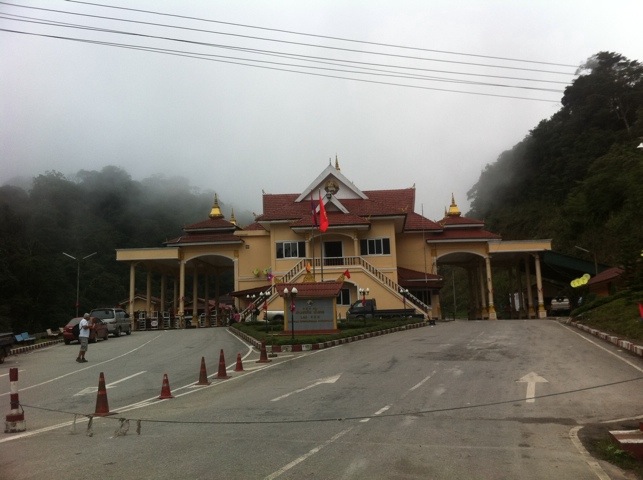
The border, Laos side
We’re now in Laos, having crossed the border when it first opened at 7am this morning. So narrow is the country that we’re already skirting its western border, and as I write this I can see over the river to our left to the trees in Thailand, where we’ll be setting foot sometime in the New Year. Our border crossing earlier was entertainment in its own right, with a jester amid the border guards on the Vietnamese side. They’d collected in all the foreign passports in
order to stamp us out (for a princely $1), and so had to return them. The guy called out each name, after which the corresponding person jumped to the front and did their best to look like their passport photo. Hats and sunglasses were removed, smiles were suppressed, and we tried to look as 2D as possible. It was more of a challenge for one girl who now had frizzy hair in contrast to her straight-haired photo; the guard even showed me her passport in jest as he refused to return it to her. Fortunately she had ID to vouch for herself, although at one moment it did seem he was going to seize that too! Laura and I managed to make it through unscathed – she actually looks quite like her photo, and it turns out that for me, the trick was to put on my best criminal pose, and then puff out my cheeks like a hamster – it would appear that I’ve lost weight since the snap was taken!
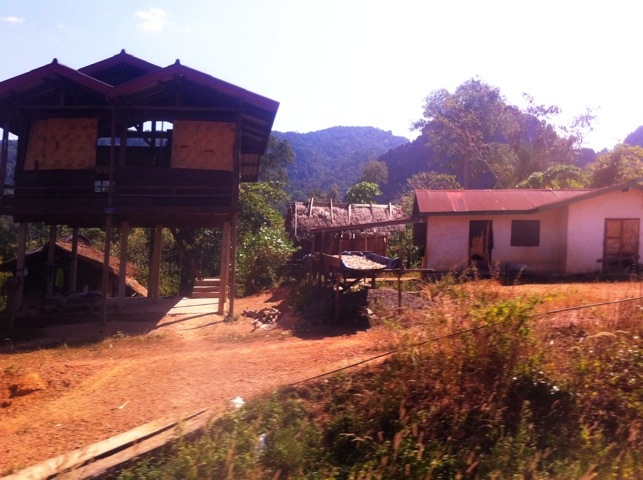
A traditional stilt house we drove past in Laos
All in all, we found Vietnam a little hard to get stuck into after India. Some of the places we went to were fascinating, and some of the things we saw and learnt heart-wrencing, particularly around the war. Unfortunately these moments of shock and awe were interspersed with a bitter taste from having both a taxi driver and a hostel try to con us in Hanoi. Perhaps we’ve also travelled too fast and not stopped long enough to let the qualities of the locals and their way of life really settle; our few days in Hoi An, in Ha Long Bay, and in Sa Pa were each enchanting in their own way – but not quite enough to make the whole.
So with less than a month to go until Christmas, we find ourselves on a sleeper bus to sleepy Laos, where we hope to find a different pace with a relatively untouched way of life. As the French put it, “The Vietnamese plant rice, the Cambodians watch it grow, and the Lao listen to it grow”. We’ll let you know what it sounds like next time!
Simon

